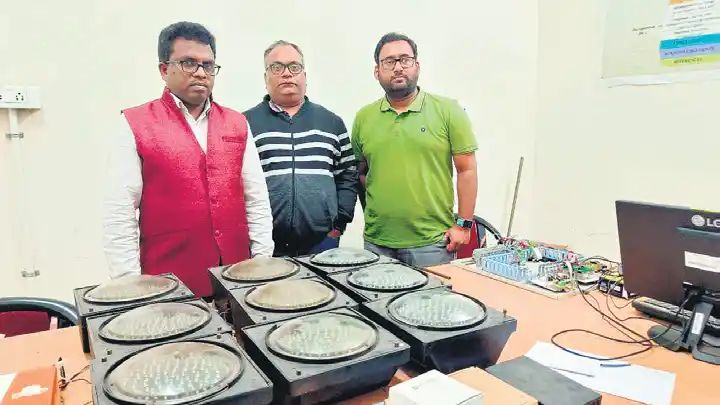NIT-R team comes up with AI-based system to ease traffic woes

ROURKELA: Researchers at National Institute of Techology-Rourkela (NIT-R) have developed an AI-based multi-class vehicle detection (MCVD) model and light fusion bi-directional feature pyramid network (LFBFPN) tool to help improve traffic management.
Led by associate professor in department of Electronics & Communication Engineering (ECE) Santos Kumar Das, the research team has leveraged an intelligent vehicle detection (IVD) system, which uses computer vision to identify vehicles in images and videos.
To address the challenges of Indian road conditions with complex and mixed traffic, Das and his team have developed a new MCVD model which uses video de-interlacing network (VDnet) to efficiently extract key features from traffic images, even when vehicles vary in size and shape. They have used LFBFPN to further refine the extracted details.
Das said, “What makes LFBFPN unique is that it uses a simpler method, reducing the complexity of the model without sacrificing its accuracy. The system then processes the details through another tool called modified vehicle detection head (MVDH), which helps accurately detect and classify vehicles in all kinds of traffic situations.”
The MCVD model demonstrates an improved accuracy compared to existing methods. The team tested the model using the heterogeneous traffic labelled dataset (HTLD) which includes data from several cities across India available for public use. The model’s real-time performance was also evaluated on edge computing device Nvidia Jetson TX2 where it maintained strong speed and accuracy even under challenging weather conditions and with low-resolution images.
“By overcoming the limitations of older models and addressing the unique challenges of mixed traffic, the MCVD model offers a scalable option for real-time vehicle detection in developing countries. Its use could help improve traffic systems, reduce congestion and enhance road safety,” said Das.
A research paper on the findings co-authored by Das and his team of research scholars Prashant Deshmukh and Krishna Chaitanya Rayasam along with Prof Upendra Sahoo from ECE, NIT-R and Prof Sudhan Majhi from IISc Bangalore has been published in the prestigious journal IEEE Transaction on Intelligent Transportation Systems.
According to Das, the traditional IVD model including sensor systems such as radar and light detection and ranging (LiDAR) work well for developed countries with organised traffic. However, these systems face challenges in developing nations with mixed traffic comprising bicycles, two-wheelers, cars, trucks, rickshaws, animal carts and pedestrians often operating in close proximity, and struggle in adverse weather condition besides being too expensive, he added.
The research team is further working on developing a traffic control system based on this idea and also planning to commercialise it through a start-up.







